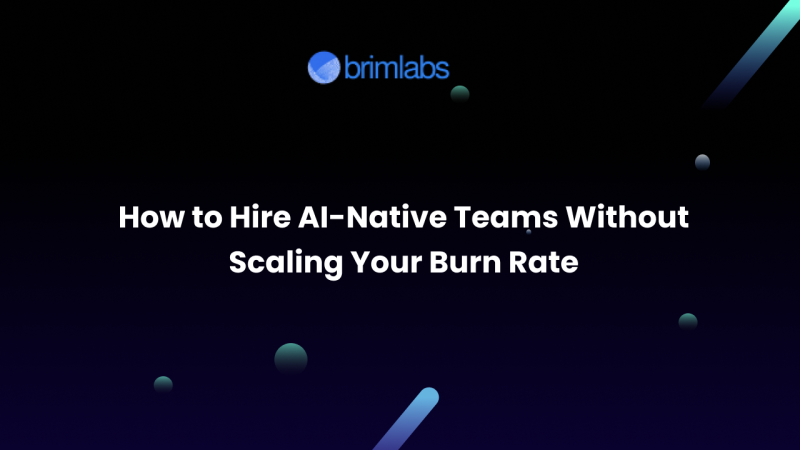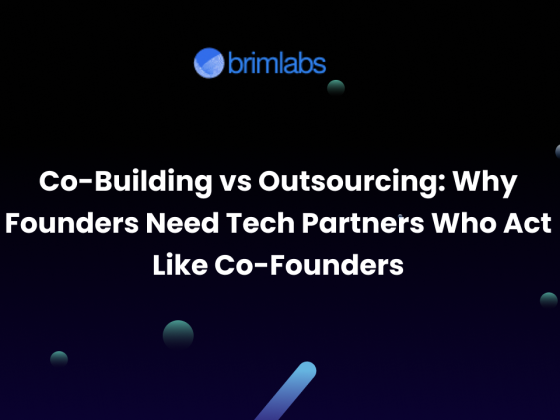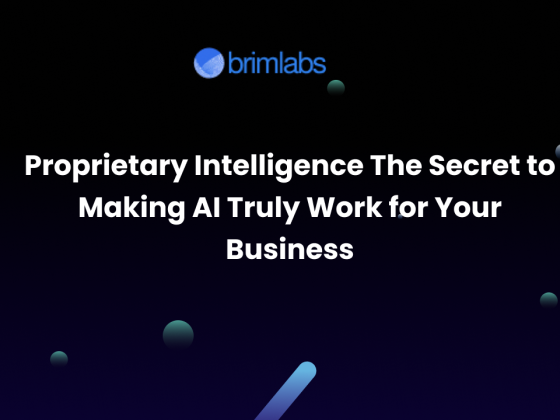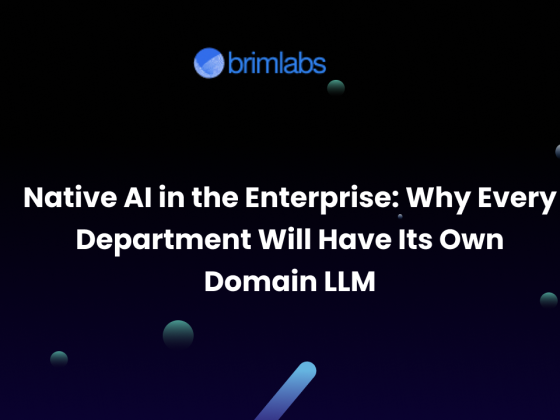Every founder today faces the same paradox: investors and markets demand AI-native products, but building the right AI team in-house is expensive, slow, and risky. Salaries for AI engineers have skyrocketed, the talent pool is limited, and most startups cannot afford to make hiring mistakes that drain runway.
So how do you access AI-native expertise without scaling your burn rate? The answer lies in co-building with a partner who brings AI-native teams to your product journey.
At Brim Labs, we’ve helped founders across FinTech, Healthcare, SaaS, and E-commerce solve this very problem. Instead of overhiring, our clients bring us in as co-builders. Together, we build, scale, and evolve AI-powered products sustainably, without inflating fixed costs.
Why Founders Need AI-Native Teams, And Why Burn Rate Becomes the Barrier
For modern startups, AI isn’t optional anymore. Whether you’re in fintech, healthcare, SaaS, or e-commerce, AI is quickly moving from a “nice-to-have” feature to the core layer of competitiveness.
Founders need AI-native teams because these teams:
- Architect intelligence from the start: They don’t just bolt on a chatbot; they design systems where models, data pipelines, and feedback loops are built into the product DNA.
- Balance performance with cost: They know when to fine-tune a model, when to rely on APIs, and how to optimize for latency and scale.
- Navigate compliance and risk: From HIPAA to GDPR, they build with security and trust baked in.
- Think in product terms, not just technical terms: They understand user experience, investor expectations, and market readiness.
But here’s the tension: accessing this caliber of talent is traditionally expensive. Salaries, infrastructure, and recruitment cycles add up fast. For early-stage companies still finding product-market fit, those costs can balloon burn rates and shorten runway before real traction is achieved.
This is why founders need a smarter model: a way to access AI-native capability without permanently carrying AI-native payroll.
A Smarter Model: Co-Building Without Over-Hiring
Instead of treating AI-native capability as a permanent headcount, treat it as a scalable service layer that grows with your product. That’s the philosophy behind co-building with Brim Labs.
What Makes Co-Building Different?
- Elastic Pods: Cross-functional teams of AI/ML engineers, product designers, backend developers, and DevOps that you can scale up or down.
- Outcome-Oriented: Instead of paying for hours, you pay for outcomes: product features, milestones, or entire releases.
- Aligned Incentives: We often work through hybrid models (cash plus equity), tying our growth to your growth.
- Capital Efficiency: You access high-quality AI expertise without taking on full-time salaries or infrastructure overheads.
Think of it as hiring a co-founder-level team on demand, without carrying them on payroll.
Building Without Burn: The Brim Labs Approach
At Brim Labs, we’ve designed a model that helps founders build and scale AI-native products sustainably. Here’s how:
- Start Lean, Validate Fast: Begin with a pod. Build a lean, working product that proves your thesis and validates demand before expanding.
- Iterate With Elastic Teams: As your product evolves, expand or contract the team based on real needs. You avoid the trap of carrying costs for skills you only occasionally need.
- Scale Intelligently: Once you have product-market fit and funding, you can choose to internalize core AI talent. Until then, co-build with us to preserve runway.
- Focus on the Business, Not Just the Build: Our teams think about compliance (GDPR, HIPAA, SOC 2), investor readiness, and growth, not just code. This helps founders concentrate on vision and fundraising while we manage the technical heavy lifting.
The Investor Perspective
Investors are shifting their expectations. They care less about headcount and more about capital efficiency plus traction.
A founder who says, “We built this product with a lean, scalable AI team that cost 70% less than hiring in-house” sends a powerful signal: resourcefulness. That builds confidence in your ability to manage capital post-funding as well.
Founder’s Playbook: Scaling Without Burn
Here’s a simple framework to decide if you should hire in-house or co-build:
- Stage 1: Idea to Validation: Use pods. Stay lean. Validate demand.
- Stage 2: Product-Market Fit: Scale teams elastically. Add features, improve UX, and integrate compliance.
- Stage 3: Growth and Scale: Bring core talent in-house for strategic control while continuing to co-build non-core modules.
This approach ensures you build AI-native products step by step, keeping your burn aligned with growth.
Conclusion: Build Smarter, Scale Leaner
Hiring AI-native teams doesn’t have to mean scaling your burn rate. The key is to shift from owning talent permanently to accessing talent intelligently.
At Brim Labs, we help founders do exactly that: build, iterate, and scale AI-native products with world-class teams, without runaway costs.
For founders, the takeaway is clear: don’t measure progress by how many engineers you hire. Measure it by how efficiently you can build what your users and investors care about.
Your vision deserves an AI-native team. But your burn rate doesn’t have to suffer for it.











